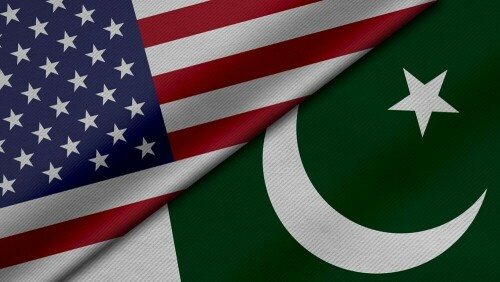NARENDRA Modi has come a long way from the time he was denied a US visa for his role in the Gujarat pogrom. Times have changed. He is now the prime minister of a country that the US wants to build as a counterweight to rising China. The US has honoured him, with his state visit and address to the US Congress. It believes India can serve as Washington’s ally in its competition with China. But while India has welcomed its growing ties with the US, it appears that it is not looking for any alliance with it and wants to keep its options open.
The Indian leadership appreciates that the US is still the most eminent military and economic power, and that India has much to gain in terms of defence deals and technologies. Indian military capabilities have already been bolstered by bilateral agreements allowing the use of each other’s military logistics (LEMOA), compatibility of encrypted communication equipment (COMCASA), and exchange of geospatial intelligence (BECA). During Modi’s recent visit to Washington, the US agreed to sell armed drones and manufacture GE engines in India.
Yet, India is not prepared to sacrifice its longtime ties with Russia. India did not condemn Russia for its aggression against Ukraine, and also started buying Russian oil, which helped Russia redress the deleterious impact of Western sanctions. Likewise, India wants to deal with China on its own terms and not on behalf of the US, despite serious India-China border issues. India has also maintained its trade and economic relations with China and cooperates closely with China on BRICS, SCO, AIIB and other forums.
For its part, the US recognises there are limits to what India can, or would, do to counter China or Russia. Yet, it is continuing to invest in India as the country is central to America’s plans to situate an arc of containment against China, with due support from Australia, Japan and some other countries in the Indo-Pacific region.
There are limits to what the US-India partnership can achieve.
So, are both countries misreading each other? Can the high-flying visit of an Indian prime minister to Washington address the mismatch of mutual expectations?
There are two broad foundations for the close partnership that India and the US are seeking to establish: geopolitical interests in the Indo-Pacific region, and shared democratic values. On both counts, there are issues that place limits on what can be achieved. While shared geopolitical objectives essentially revolve around China, India is not inclined to be categorised as a ‘US ally’. Foreign Minister Subrahmanyam Jaishankar has often talked about ‘strategic autonomy’. Indian journalist Barkha Dutt in her Washington Post article says, “Sorry, America. India will never be your ally”. She argues: “In a multipolar world, India will look to be a pole, not an exclusive partner.”
As for shared democratic values, there are growing concerns in America on the weakening of democracy in India and violence against religious minorities. The State Department’s 2022 report on international religious freedom has documented violence by law-enforcement authorities against religious minorities in multiple states.
American scholar Daniel Markey has argued in a recent essay in Foreign Affairs that India-US relations are not based on shared values of democracy but on convenience and interests. Dozens of US lawmakers have written a letter to President Joe Biden, drawing his attention to the “troubling signs” in India of shrinking political space and the rise of religious intolerance.
An interesting perspective has been fielded by Indian journalist Raja Mohan, who describes the Modi visit as a “fundamental turning point” in India-US ties. His argument is that the convergence is not about containing China, but creating a new multipolar Asia. While there is no doubt that Asia, as indeed the rest of the world, is fast becoming multipolar, the Modi visit, from the US perspective, seems to be centred on US objectives in the Indo-Pacific, including “empowering the QUAD” and the Indo-Pacific Economic Framework. Markey argued in his interview with Karan Thapar that US cooperation with India should be limited to those technologies that can enable India to defend itself against China.
Intriguingly, the joint statement after Modi’s visit does not explicitly mention China or Russia, but makes a negative reference to Pakistan in the context of cross-border terrorism even though Pakistan fought against terrorism and actually achieved results. The US knows well that fighting terrorism is a joint responsibility of the international community, and should not have signed on to this reference, which is a violation of the norms of bilateralism. India’s continuing targeting of Pakistan is unfortunate and a bad omen for peace and stability in South Asia.
The writer is a former foreign secretary and author of Diplomatic Footprints.
Published in Dawn, June 25th, 2023












































Dear visitor, the comments section is undergoing an overhaul and will return soon.